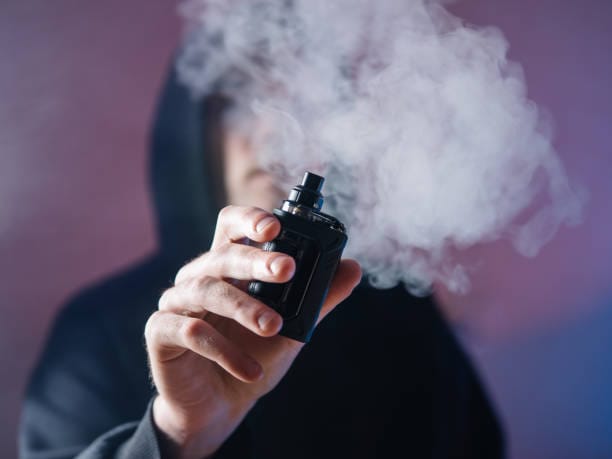Introduction
As vaping, humidifiers, and essential oil diffusers make their way into the homes of millions of people, “vapor” has become a familiar term. But amid all the convenience and comfort these devices offer, a pressing question arises: Can vapor kill you? The term “vapor” extends from such a vapor as water mist to dangerous chemicals; still, it is the fact that due to evaporation of substantial quantities of the liquid, a certain kind of vapor is formed. To decide what kind of risk facing with vapor, it is very important to understand what kind of vapor it is.
In this article, the author looks into the details of vapor, particularly the dangerous vapors, and how one can safeguard themselves. It’s time to get to know the intricacies of vapor safety and sort out fact from fiction.
What is vapor?

Steam is the gaseous phase of a substance that may be in the form of a liquid or a solid at the crystallization temperature. It develops when a substance is heated or it evaporates and it can be as innocent as a water vapor or as dangerous as toxic chemical vapor.

Types of vapor:
- Water Vapor: A safe and endogenous mist characterized by the boiling of water.
- Vape Clouds: These are formed by e-cigarettes, and they contain nicotine, flavorings, and other ingredients.
- Chemical Vapors: Of some releasedknown,ounds,s such as those used in cleaning, solvents, or industries.
- Oil Vapors: Emitting from essential oil diffusers and all kinds of aromatherapy products.
Harmful effects of this type of vapor are known while it cannot be said that all types of vapor are dangerous.
Types of Vapor and Their Potential Dangers

1. Water vapor: Is it harmful?
Steam can be produced by very simple means, such as boiling water or using a humidifier. In fact, it’s usually harmless and is actually helpful within a lot of contexts. It is important to maintain healthy humidity in and around your home and this is where humidifiers come in, as they prevent dry skin, an respiratory related issues in dry areas.
Risks:
- Scalding: High-temperature water, for example – steam, can burn the skin and tissues of a person if he or she is too close to the source of heat – for instance, steam from boiling water or a sauna.
- Mold Growth: High humidity in a closed area causes the formation of molds that cause allergies and other respiratory disorders.
- Contaminants: The water that is employed in the humidifiers must be clean, failing which any dirt will be dispersed into the air, leading to risks of infection.
2. Vaping: The Hidden Dangers

Electronic cigarettes are widely publicized as safe to use as smoking provides vapor through heating of which include nicotine, flavorings, and chemicals. Even though vaping may deposit none of the many unhealthy chemicals of cigarette smoke in the user’s body, it has its own dangers.
Risks:
- Nicotine Poisoning: Consuming too much nicotine either through ingestion or inhalation is dangerous and comes with symptoms such as high heart rate, nausea, and sometimes even death.
- Lung Injury: It is associated with EVALI (e-cigarette or vaping Product Use-Associated Lung Injury) and can lead to respiratory failure and death at times.
- Chemical Exposure: Further, most vaping liquids comprise chemicals, and regrettably, when they are inhaled, such chemicals like formaldehyde and diacetyl could be dangerous for your health in the long run.
3. Chemical Vapor: The Silent Killer
Fumes generated from cleaning products, solvents, and paints are dangerous if taken in. These substances emit volatile organic compounds (VOCs); at high c, they are dangerous to human health.
Risks:
- Immediate Symptoms: Chemical vapours have been identified to trigger headaches, dizziness, and irritation of the respiratory system.
- Long-Term Health Effects: Long-term exposure to VOCs causes damage to the organs, nervous system disorders, and cancer.
- Sudden Death: In the extreme conditions, exposure with high density of chemical vapours may lead to asphyxia or poisoning, which may resulinto sudden death.
4. Oil Vapors: Aromatherapy or Danger?
Fundamental components of essential oil dispensers are found in households to enhance the mood of the occupants. That being said, some oils are toxic, and when in contact with their vapors should not be near children, pets, or anyone with breathing issues.
Risks:vapors, they
- Respiratory Issues: While some essential oils can trigger coughing, wheezing, and breathing problems in the lungs,.
- Allergic Reactions: Some people can have an allergic response to essential oil fumes and will have skin redness, itching, or rashes and anaphylaxis.
- Toxicity: To know how toxic hazel nuts truly are, specifically to people with asthma, special ingredient lists need to be procured. These oils, for instance, Eucalyptus oil, Peppermint, tea tree are poisonous if ingested or inhaled.
How Vapor Can Kill You: Case Studies and Incidents

While vapor in and of itself does not appear lethal, everyday events have proven that it can be fatal under some conditions.
1. Vaping-Related Deaths (EVALI Crisis)
The most severe lung illnesses were recorded throughout the United States in 2019, and the major cause was identified to be associated with vaping. This became known as the EVALI, or E-cigarette or Vaping Product Use-Associated Lung Injury crisis, which led to over 60 deaths and thousands of hospitalizations. Experts said that vitamin E acetate, which is used in some recognized vape products as a thickeningagent,t has been found to be toxic to the lungs.
2. Chemical Vapor Accidents in Industry
Many chemical plant and factory catastrophes occur, with chemical vapors being the cause of the industrial disaster. For instance, chemical vapor such as chlorine gas during World War One caused many deaths. In contemporary contexts, workers who may be exposed to high concentration of toxic fumes in confined spaces, including cleaning solvents or refrigeration gases, have actually been reported to have died due to inhalation concentrations
3. Household Incidents with Oil valves
Deaths from the accidental inhalation of essential oil vapours are rare but they do occur occasionally. It is particularly important not to use some of these oils around children below the age of five, pregnant women, people with weak immune systems and pets. For instance, cats can be severely affected by tea tree oil since the vapors from the oil can cause neurological problems or death.
How to Protect Yourself from Dangerous Vapors

However, most of these dangers are not as scary as they sound and can be avoided with precautions.
1. Water Vapor Safety
- For this, it is recommended that clean water be used on the humidifiers so as not to spread the contaminants.
- Ensure the rooms are adequately ventilated so that the humidity does not rise high or lead to mold formation.
- Do not get exposed to hot steam directly.
2. Vaping Safety
- It is important to ensure you only vape using the regulated products from reputable suppliers.
- Reduce use of nicotine in order to reduce cases of poisoning.
- Be careful and if there are any issues with your lungs, watch them carefully and seek medical advice when necessary.
3. Chemical Vapor Safety
- It is forbidden to use cleaning products and chemicals without proper ventilation of the room.
- This is a measure to be employed with extenders if handling strong chemicals is involved.
- Never expose chemicals to the open since they might cause spillage or leakage.
4. Essential Oil Safety
- Cautions regarding the use of the oils include moderation and prolonged use is discouraged.
- It’s advisable to avoid having young children or pets around essential oils and diffusers.
- A diffuser is used to spread the vapor, and then the room should be aired.
Conclusion
Thus, all vapors are not similar and most of them may not be potentially fatal, but they also exist—hose that are quite lethal. While aromatherapy is as simple as the vapor emanating from an essential oil diffuser, there are certain chemical vapors, including formaldehyde, that are lethal. In addition to being able to identify the risks, it is equally critical to learn how best to avoid them.
E-cig or vaping, which is considered safer than smoking, is in itself dangerous in terms of nicotine overdose or lung diseases. Many of the volatile substances emit toxic fumes, resulting in severe effects on the overall health of an individual, or be lethal when breathed in large concentrations. That is, even ordinary water vapor can become dangerous when not controlled correctly.




